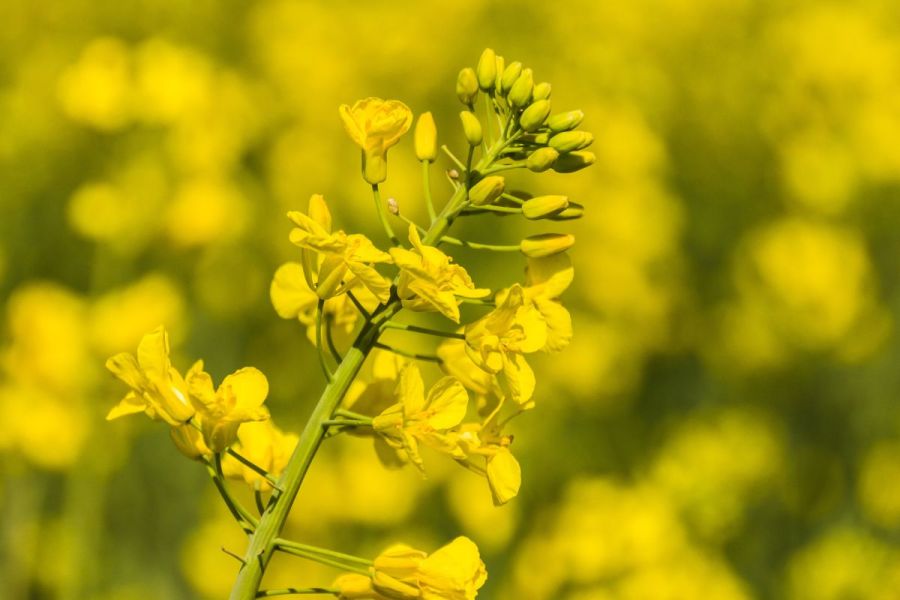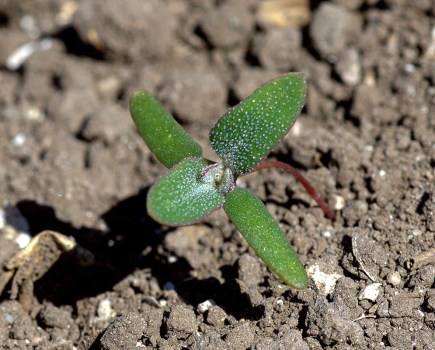Oilseed rape is a crop that’s having a hard time but breeders are doing all within their power to create more resilient varieties. Cue DSV’s Dolphin, with its high gross output and all-new harvest protection genetics. CPM takes a closer look.
“It’s hard to ignore its East/West gross output of 106%, matching all of the top varieties on the RL.”
By Melanie Jenkins
Dolphins are known for their high intelligence, diverse hunting skills and airborne acrobatics, but DSV is hoping it’s latest oilseed rape variety of the same name will be known for its oil content combined with its new powerful pods genetics.
New to AHDB’s Recommended List for 2024/25, DSV Dolphin boasts a number of attributes, including a high gross output and good agronomics, but the firm is hoping to bring greater security to OSR growing in light of the increasingly variable growing conditions farmers are facing.
According to DSV’s Sarah Hawthorne, the variety is the first of a new generation of hybrid varieties specifically developed to combine a key set of genetic traits which protect against adverse weather conditions later in the season.
“Pod shatter genetics featured in several DSV OSR varieties and others on the RL, have done much to highlight the issue of harvest seed shed. However, it’s now widely understood that how a variety performs during its growth and at harvest is the function of many different characteristics rather than a single gene or property.
“Other factors such as the plant’s overall strength and health, its disease resistance and growth habit together with the actual physical form of the pod, are increasingly seen as fundamental to how it performs at harvest.”
DSV’s breeding team has been working to incorporate a core set of traits within its latest material based around the concept of ‘Powerful Pods’, says the firm’s Alex Doering. “We’ve now identified three key pod characteristics, which when included in varieties, contribute significantly to reduced seed losses in adverse conditions. These consist of greater flexibility of the pod structure, improved function of the pod valve margins, greater space around individual seeds and longer actual length of pods.”
Pod structure flexibility ensures a resilient ‘rattle-proof’ form, making pods less friable and better able to absorb the energy experienced from extremely high winds or hail storms, rather than breaking open, he explains. “In addition, the greater flexibility also allows pods to cope better with the uneven tensions produced from drying after rainfall which can result in seed pods splitting.
“The valve margin is the mechanism at the base of the pod which essentially controls the opening of the valves, effectively the sides of the pod containing the seeds. Having a stronger valve margin helps to avoid the early triggering of the opening process which can happen when pods are stressed, such as in adverse weather or when being combined.”
So how does the final trait of having more space around the individual seeds make a difference? “When seeds have more space in individual pods it allows them to develop fully as they mature so a variety can reach its full yield potential, but it also stops growth stressing the pod which can again lead to premature failure,” explains Alex.
In both DSV’s own trials and through AHDB analysis of pod shatter, the results have demonstrated Dolphin’s performance in this respect, says Sarah. “A trial conducted at DSV’s breeding station in Thule, Germany, saw pods from different varieties hit with steel ball bearings to test impact tolerance and Dolphin demonstrated the highest score for seed retention.
“In addition to this, results from 2023 AHDB analysis have also shown little difference in the performance of the variety with regard to seed loss compared with many of the most popular pod shatter varieties,” she adds.
United Oilseeds’ Beckii Gibbs highlights that Dolphin carries DSV’s powerful pods protection traits with inbuilt pod technology providing maximum seed retention at harvest. “Seed loss protection is an extremely important trait to have due to an increased prevalence of heavy showers in and around harvest time. I know from speaking to farmers that it’s extremely frustrating to see the pods fill, only for sharp showers or even hail to knock a portion to the ground. Pod shatter gives some insurance against the ever-changing climate and it’s something growers are keen to see in their chosen varieties.”
As well as the variety’s pod shatter resistance genetics, it also offers a robust disease package with good scores for light leaf spot, phoma, and resistance to turnip yellows virus (TuYV), says Beckii.
According to Sarah, Dolphin is one of only a few varieties with the Rlm7+ gene, as well as multi gene resistance to phoma. In addition, she flags that the variety has a strong resistance to verticillium, something which is becoming of increasing note to the industry.
“The variety also has some of strongest tolerance to sclerotinia in our portfolio. We know that both of these diseases can result in early senescence which can result in seed loss prior getting the combine in the field.”
But Beckii feels that Dolphin’s standout characteristic is its oil content. “This is very high at 46.6%, but that said, it’s hard to ignore its East/West gross output of 106% matching all of the top varieties on the RL.”
Another of the variety’s key attributes is its new leaf development, meaning it grows away extremely well in the spring, she explains. “And as a relatively short variety, at 143cm, it offers good ground cover with excellent standing ability. All-in-all, it’s a reliable, simple to grow variety that should do well.”
However, with it being new, Beckii feels it’s hard to say if there are any drawbacks just yet. “From what’s been observed in DSV trials, the variety is seen as reliable and simple to grow offering practical traits which help a grower at harvest. The disease package seems to cover all bases, so at this stage, I can’t see anything to fault.”
Due to how the variety has performed in trials so far, Beckii believes it’s naturally suited to those in the East/West regions. “While it seems a suitable variety for any grower with a good all-around package, given that it’s bred to be simple to grow, it may be that it’s particularly suited to those who’ve had a break from OSR or potential new growers.”
As far as where Dolphin could fit on farm and the varieties it could work well alongside, she thinks with its strong spring vigour and potential for a later sowing date, she’d be tempted to spread risk by having an earlier drilled variety alongside Dolphin. “Likewise, I’d perhaps look at some of the other traits and see what I could plant to complement it opting for something like Attica, a strong hybrid that has proven on-farm performance with pod shatter in-built.”
With all of its attributes in mind, what sort of potential marketability does Dolphin have? “The proof is usually in the pudding and the statistics in trials suggest Dolphin will do well,” says Beckii. “But there are a number of good new varieties vying for a spot this year.”
This article was taken from the latest issue of CPM. Read the article in full here.
For more articles like this, subscribe here.
Sign up for Crop Production Magazine’s FREE e-newsletter here.




